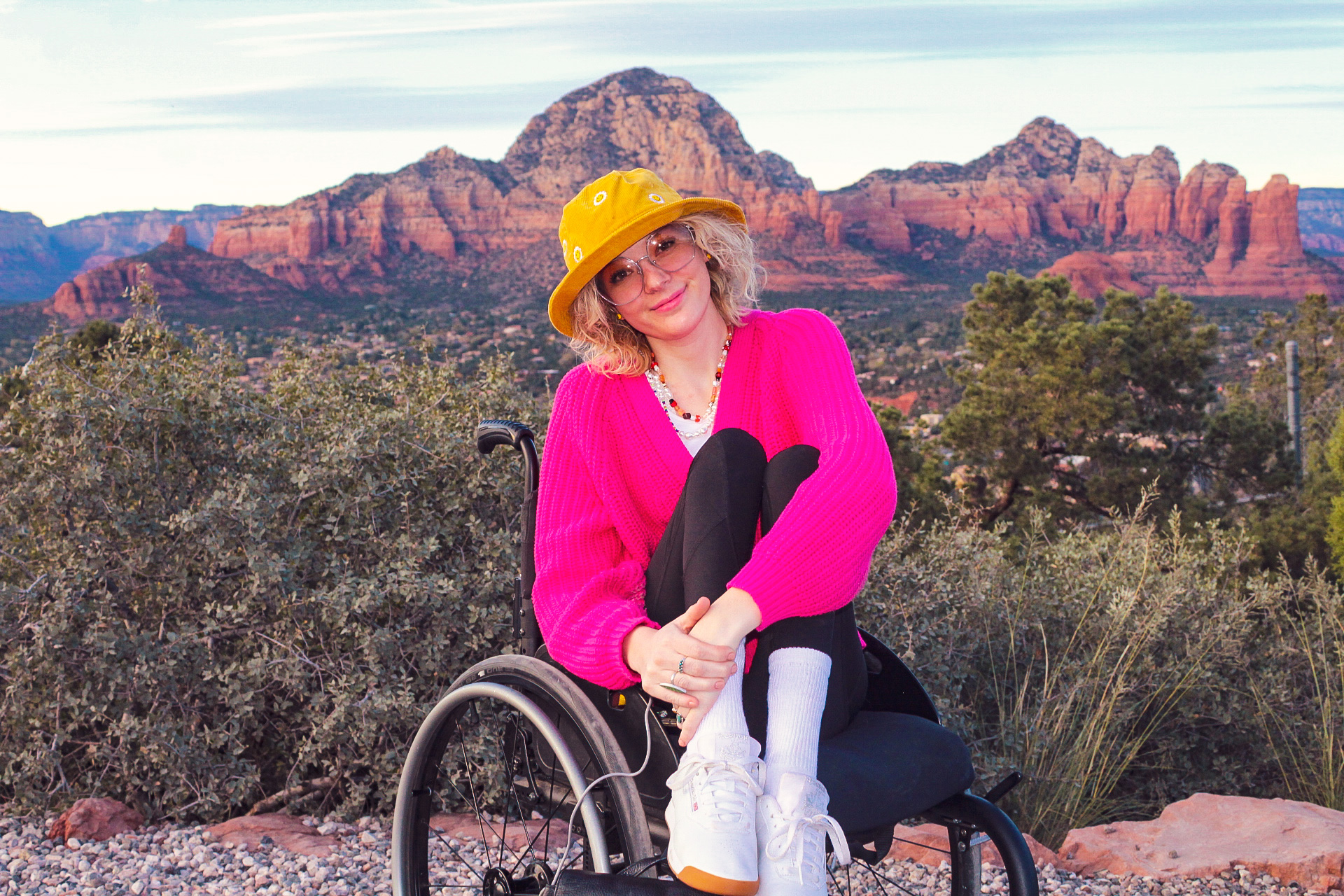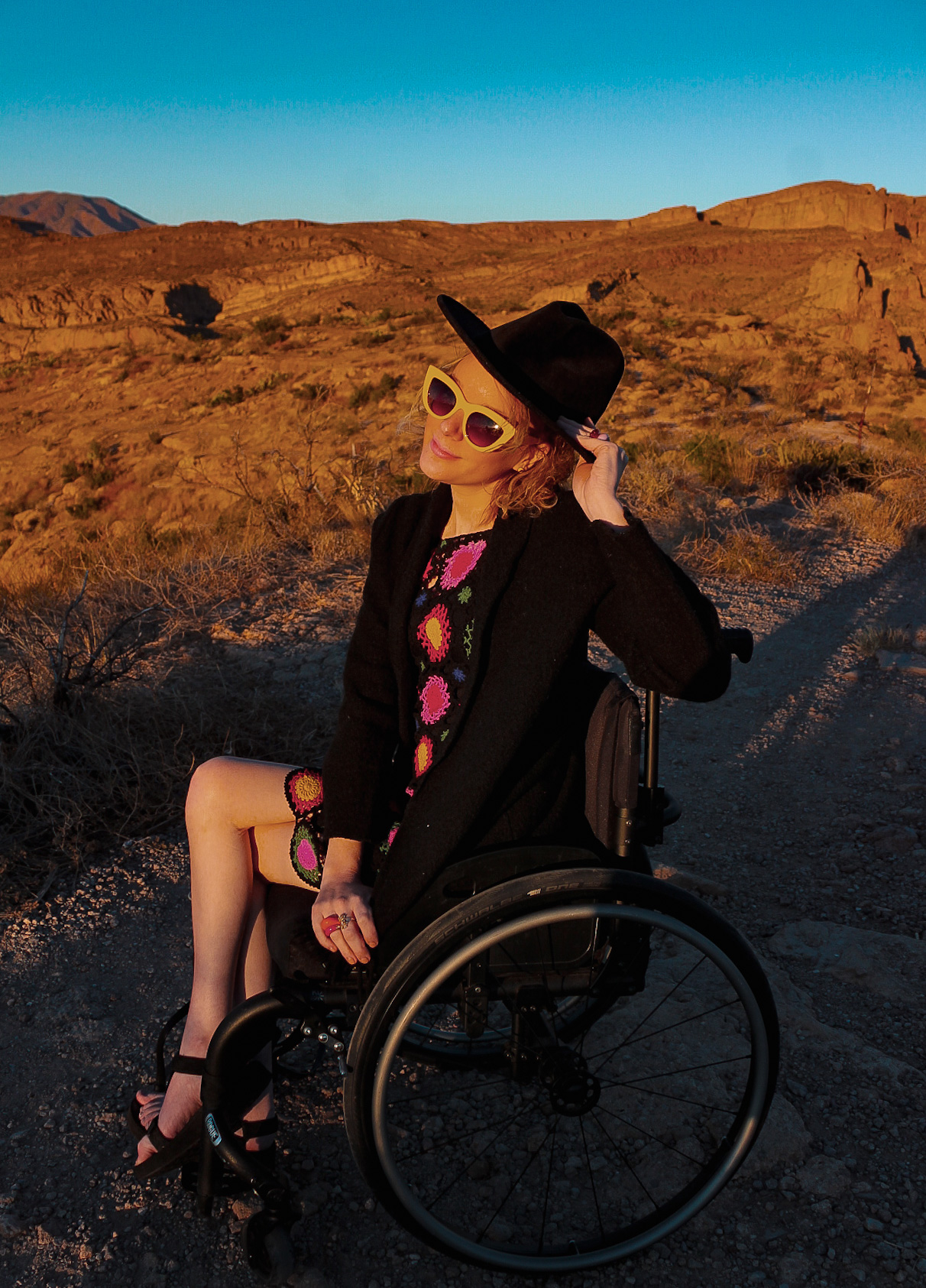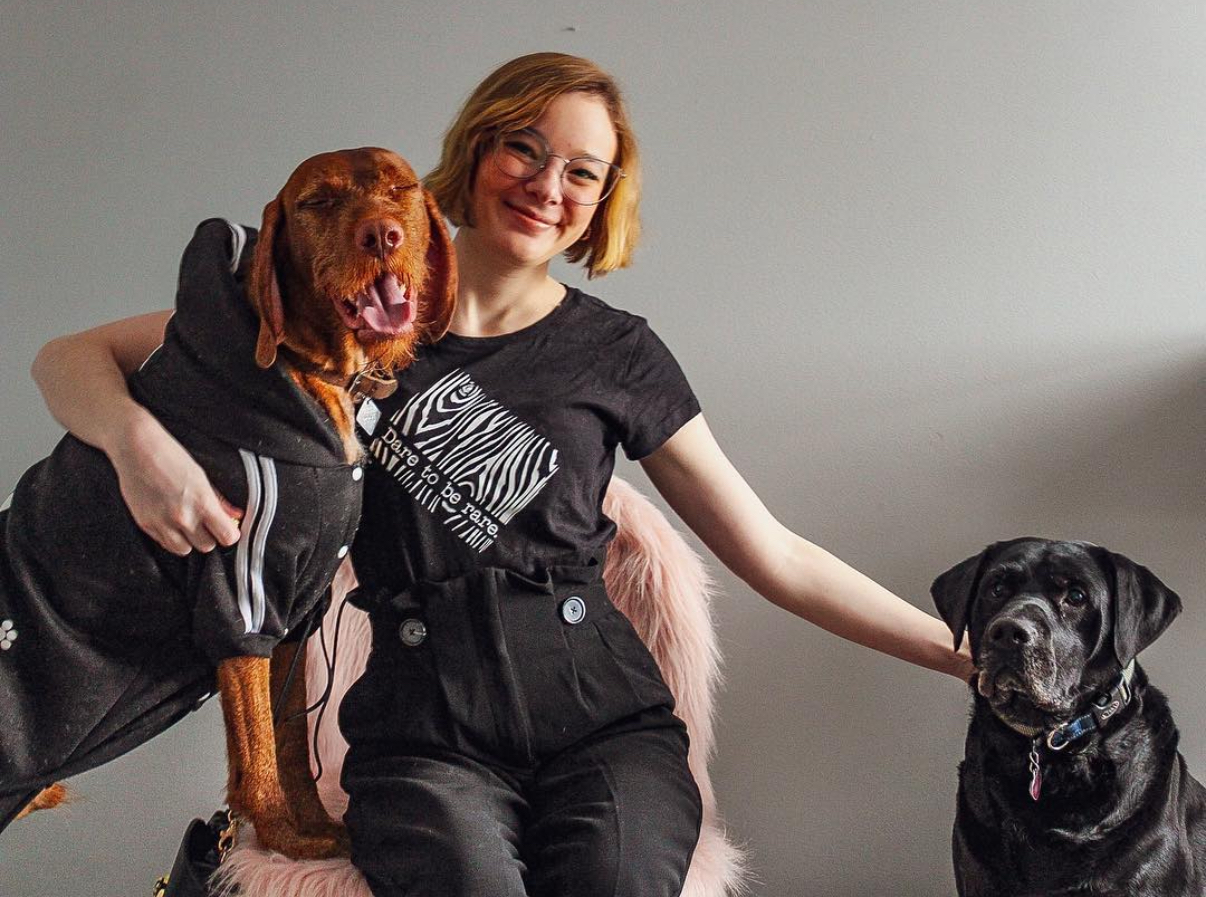Living Boldly With a Rare Disease: Cienna Ditri’s Mission To Empower and Educate
Published March 10, 2025
Patient Perspectives

For most of Cienna Ditri’s life, she was unaware she was living with a rare neuromuscular (NM) disease. She grew up loving sports, dancing, and being active. Although she experienced muscle weakness, she assumed it was normal. It wasn’t until her early 20s that she finally received a diagnosis: periodic paralysis (PP). Now a social media fashion icon, rare disease advocate, and president of the Periodic Paralysis Association (PPA), she combines her encouraging perspective and incredible style with a mission to raise awareness of PP.
Like many with undiagnosed NM diseases, Cienna struggled for decades without answers. “I was diagnosed clinically about 7 years ago at around 23 or 24 years old,” she says, noting how lucky she felt to have received her diagnosis then. She and her endocrinologist, Betul Hatipoglu, MD, weren’t searching for a diagnosis when Dr. Hatipoglu attended a seminar on PP and recognized Cienna’s symptoms. Cienna explains the symptoms of PP as, “When I have attacks, it isn’t that my body gets rid of the potassium; it is that my potassium moves into my muscles, making them so heavy, hard to move, and sometimes painful. The weakness feels like trying to move through cement or a pool of peanut butter.”
Although genetic testing hasn’t identified a known PP gene in her, the combination of previous bloodwork taken during an episode and recognizing similar symptoms her mother experienced, Cienna and her provider realized her triggers fit the pattern for PP. She was diagnosed clinically, and treatment began immediately.
Receiving a diagnosis was a turning point filled with both relief and uncertainty. “Honestly, my endocrinologist and I were learning about the condition together in the beginning,” she recalled. She started medication, utilized a trigger tracker, spoke with patient mentors, and had a patient access manager—all of which she says changed her life. “We weren’t sure what living with PP would look like for me. But for the first time, I had a framework—I could learn about my triggers, make lifestyle changes, and get treatment to reduce my attacks.”
Her condition has significantly impacted her daily life, and as a wheelchair user, accessibility is always a consideration. “Cold is one of my biggest triggers, and I live in Michigan,” she says. “So that means heated blankets, jackets, gloves, and even a heated seat on my electric wheelchair!” She’s found support in her friends, family, and the PP community. “When you have a disability or chronic condition, it can be tricky having friends,” she admitted. “What I can promise you is that the ones that stay are the ones that matter,” she says, noting the many ways her friends ensure her wellness and accessibility are prioritized.
“Cold is one of my biggest triggers, and I live in Michigan,” she says. “So that means heated blankets, jackets, gloves, and even a heated seat on my electric wheelchair!” She’s found support in her friends, family, and the PP community. “When you have a disability or chronic condition, it can be tricky having friends,” she admitted. “What I can promise you is that the ones that stay are the ones that matter,” she says, noting the many ways her friends ensure her wellness and accessibility are prioritized.
Despite the challenges, she refuses to let her condition define her limitations. She is training as a parasurfer and carefully managing her health by planning warm-ups and cooldowns and having rescue medications available. “I focus on what I can do, not what I can’t,” she emphasized.
Finding others with PP was also life changing. Cienna was introduced to the PPA at a rare disease event and instantly found support from them. “People with rare diseases often never meet someone like them, but I’ve been incredibly lucky,” she said. “This community has saved my life more times than I can count.” From providing crucial research on anesthesia safety, to connecting patients with leading specialists, the PPA has become an invaluable resource to her. “Before I was diagnosed, anesthesia was terrifying—I barely tolerated it. At one point, an anesthesiologist told me to say goodbye to my family before surgery. Thanks to William Harr, DNP,’s PP anesthesia protocols, I now get through surgeries just fine.”
Despite living with a rare disease, she has been determined to create a meaningful, joyful life through one of her favorite mottos; “My conditions are chronic, but my style is iconic.” She says it’s important to remember that her happiness isn’t dependent on her health. “I’m not suffering from my condition—I’m living with it. I can live a beautiful and fulfilling life anywhere and in any way that me and my body can. My body and I are in this together. Every scar, device, stretch mark, and part of me tells the story of how my body and I work together to enjoy the happiness our world holds every day. I can’t change what happens to me, but I can change how I react.”
 As her journey with PP continued, Cienna unexpectedly began her involvement with advocacy. “I started sharing my story on social media when I got my first service dog, Opie,” she explained. “At first, I just wanted to educate people about how he helped me. But to explain Opie, I had to explain myself—my conditions, my daily life.” Her openness about her condition and her fresh sense of style resonated with followers and expanded her network. “I never knew anyone like me growing up, so my goal became helping others feel less alone,” she said. That passion led her to join the PPA board, where she eventually became vice president and now serves as president.
As her journey with PP continued, Cienna unexpectedly began her involvement with advocacy. “I started sharing my story on social media when I got my first service dog, Opie,” she explained. “At first, I just wanted to educate people about how he helped me. But to explain Opie, I had to explain myself—my conditions, my daily life.” Her openness about her condition and her fresh sense of style resonated with followers and expanded her network. “I never knew anyone like me growing up, so my goal became helping others feel less alone,” she said. That passion led her to join the PPA board, where she eventually became vice president and now serves as president.
“I hope to help raise awareness, educate doctors, shorten the diagnostic delay, help patients find a better quality of life, and support research for cures, new testing, and treatments,” Cienna says. Sharing these goals with AANEM and the American Neuromuscular Foundation (ANF) created a partnership where, with a PPA presence at the AANEM Annual Meeting, NM specialists and the PPA can collaborate, share resources, and learn about patient challenges, helping move toward these goals.
Cienna is optimistic about the future for those with PP and shares her advice for others newly diagnosed with PP. “Find your community and be your own best advocate,” she says. “Educate yourself, track your triggers, and know that a better quality of life is possible. And most importantly—never let your condition stop you from chasing your dreams.”
